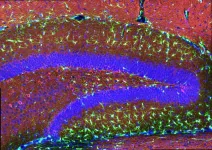(Press-News.org) Key takeaways
UCLA researchers looked at nearly 4,400 hospitals across the U.S., including 864 with high numbers of Black and Hispanic patients.
Hospitals serving Black, Hispanic and other racial and ethnic minority patients were significantly less likely than other hospitals to have access to core cancer services like PET/CT scanners, robotic surgery and palliative care.
The researchers say further work is need to understand how geographic, linguistic, cultural, cost and discrimination factors affect these cancer care disparities.
Among the nation’s hospitals, those that serve high numbers of Black and Hispanic patients are far less likely to have advanced medical equipment and critical services that have been shown to boost the quality and effectiveness of cancer care, according to a study led by investigators at the UCLA Health Jonsson Comprehensive Cancer Center.
The findings, published today in JAMA Oncology, highlight the importance of ensuring accessibility across diverse health care facilities to equitable and quality care for all patients diagnosed with cancer.
“When it comes to treating people with cancer, we know adequate resources are essential for quality care,” said Dr. Gracie Himmelstein, a resident physician in the department of medicine at the David Geffen School of Medicine at UCLA and first author of the study. “And we know what hospital you go to has a big impact on sort of what care you get. A big piece of why that is has to do with the resources that are available at those hospitals.”
The researchers analyzed patient data from hospitals across the U.S. that accept Medicare and Medicaid, and they obtained hospital-reported data from the 2020 American Hospital Association Survey. Their analysis included 4,373 hospitals, 432 of which serve high numbers of Black patients and 432 that serve a large population of Hispanic patients (with 62 of these also serving a high number of Black patients).
The team looked at the availability of 34 cancer-related services at these facilities, including core services like hospice care and pain management, chemotherapy and radiation therapy, robotic surgery, diagnostic radiology, patient support groups, and tobacco-cessation programs.
They found that hospitals serving high numbers of Black, Hispanic, and other racial and ethnic minority patients were significantly less likely to offer all the core services.
Among these core services, 13 significant disparities emerged. These included access to PET/CT scanners, palliative care, esophageal cancer ablation services, several radiotherapy techniques, diagnostic radiology services, treatments like chemotherapy and robotic surgery, tobacco treatment programs, support groups and acute inpatient psychiatric consultations.
“Many of these services are indispensable for offering top-quality cancer treatment,” said senior study author Dr. Patricia Ganz, a professor of medicine at the Geffen School of Medicine and director of the Center for Cancer Prevention and Control Research at the Jonsson Cancer Center. “Access to a PET/CT machine, for instance, plays a pivotal role in precise cancer diagnosis and monitoring, while palliative care services are instrumental in improving the overall quality of life for patients. Similarly, the capability to perform ablations for esophageal cancer can significantly impact treatment outcomes and survival rates.”
The lack of tobacco treatment programs available for people of color was also surprising, Himmelstein noted, since racial and ethnic minority groups are more likely to have tobacco-related cancers.
“The study’s findings shed light on the uneven distribution of crucial resources in different health care settings, which can alter access to timely and appropriate screening, treatment planning, cancer care delivery and outcomes,” Himmelstein said.
The researchers said that further work is needed to understand the interplay between these disparities and the role of geographic, linguistic and cost barriers, as well as cultural beliefs and discrimination.
END
Hospitals serving large Black, Hispanic populations have fewer resources for cancer care
UCLA study shows these facilities are much less likely than others to offer the full range of core cancer services
2023-11-16
ELSE PRESS RELEASES FROM THIS DATE:
Introducing EUGENe: an easy-to-use deep learning genomics software
2023-11-16
Deep learning — a form of artificial intelligence capable of improving itself with limited user input — has radically reshaped the landscape of biomedical research since its emergence in the early 2010s. It’s been particularly impactful in genomics, a field of biology that examines how our DNA is organized into genes and how these genes are activated or deactivated in individual cells. Despite this synergy, genomics researchers wanting to employ this technology are often challenged by the actual coding necessary to analyze vast pools of dense data.
Now, ...
Hunger hormones impact decision-making brain area to drive behavior
2023-11-16
A hunger hormone produced in the gut can directly impact a decision-making part of the brain in order to drive an animal’s behaviour, finds a new study by UCL (University College London) researchers.
The study in mice, published in Neuron, is the first to show how hunger hormones can directly impact activity of the brain’s hippocampus when an animal is considering food.
Lead author Dr Andrew MacAskill (UCL Neuroscience, Physiology & Pharmacology) said: “We all know our decisions ...
Epidemic-economic model provides answers to key pandemic policy questions
2023-11-16
University of Oxford news release
Institute of New Economic Thinking
Embargoed until Thursday, 16 November 2023, 16:00 GMT
Is lockdown an effective response to a pandemic, or would it be better to let individuals spontaneously reduce their risk of infection? Research published today suggests these two highly-debated options lead to similar outcomes.
A ground-breaking economic-pandemic model, created by an international team of researchers, addresses some of the key policy debates of the Covid-19 pandemic but it ...
New research advances understanding of cancer risk in gene therapies
2023-11-16
Medical research has shown promising results regarding the potential of gene therapy to cure genetic conditions such as sickle cell disease and the findings of this study, published in Nature Medicine, offer important new insights into processes happening in the body after treatment.
The present study looked at samples from six patients with sickle cell disease who were undergoing gene therapy as part of a major clinical trial at Boston Children’s Hospital. The research brought together an international team of experts, to take a closer look at the genetic changes in the stem cells of patients before and after gene therapy ...
A small molecule blocks aversive memory formation, providing a potential treatment target for depression
2023-11-16
Depression is one of the most common mental illnesses in the world, but current anti-depressants have yet to meet the needs of many patients. Neuroscientists from City University of Hong Kong (CityU) recently discovered a small molecule that can effectively alleviate stress-induced depressive symptoms in mice by preventing aversive memory formation with a lower dosage, offering a new direction for developing anti-depressants in the future.
“Depression affects millions of individuals worldwide, necessitating more effective treatments. Conventional methods, such as drug therapy with delayed onset of action and psychotherapy, have limitations in yielding satisfactory ...
Plants that survived dinosaur extinction pulled nitrogen from air
2023-11-16
DURHAM, N.C. -- Once a favored food of grazing dinosaurs, an ancient lineage of plants called cycads helped sustain these and other prehistoric animals during the Mesozoic Era, starting 252 million years ago, by being plentiful in the forest understory. Today, just a few species of the palm-like plants survive in tropical and subtropical habitats.
Like their lumbering grazers, most cycads have gone extinct. Their disappearance from their prior habitats began during the late Mesozoic and continued into the early Cenozoic Era, punctuated by the cataclysmic asteroid impact and volcanic activity that mark the K-Pg boundary 66 million years ago. However, unlike the dinosaurs, somehow a few groups ...
The mind’s eye of a neural network system
2023-11-16
WEST LAFAYETTE, Ind. – In the background of image recognition software that can ID our friends on social media and wildflowers in our yard are neural networks, a type of artificial intelligence inspired by how own our brains process data. While neural networks sprint through data, their architecture makes it difficult to trace the origin of errors that are obvious to humans — like confusing a Converse high-top with an ankle boot — limiting their use in more vital work like health care image analysis or research. A new tool developed at Purdue University makes finding those errors as simple as spotting mountaintops from an airplane.
“In a sense, if a neural ...
Study finds motorist disorientation syndrome is not only caused by vestibular dysfunction
2023-11-16
Amsterdam, November 16, 2023 – A large case series aimed at understanding the factors underlying Motorist Disorientation Syndrome (MDS) has found that patients experience severe, consistent symptoms comparable to vestibular migraine. Previously there has been speculation that underlying peripheral vestibular hypofunction, when the inner ear part of the balance system is not working properly, contributes to this presentation. However, vestibular deficits were not a consistent feature in the patients studied. The findings have been published in the Journal of Vestibular Research.
In ...
Rabies virus variants from marmosets are found in bats
2023-11-16
Rabies virus variants closely related to variants present in White-tufted marmosets (Callithrix jacchus) have been detected in bats in Ceará state, Northeast Brazil.
Rabies is a deadly disease for humans. Its emergence in distinct wildlife species is a potential source of human infection and hence a public health concern. Marmosets are common in forests and conservation units throughout Brazil. In or near urban areas, they are often captured as pets and later abandoned. They have been linked ...
How a mutation in microglia elevates Alzheimer’s risk
2023-11-16
A rare but potent genetic mutation that alters a protein in the brain’s immune cells, known as microglia, can give people as much as a three-fold greater risk of developing Alzheimer’s disease. A new study by researchers in The Picower Institute for Learning and Memory at MIT details how the mutation undermines microglia function, explaining how it seems to generate that higher risk.
“This TREM2 R47H/+ mutation is a pretty important risk factor for Alzheimer’s disease,” said study lead author Jay Penney, a former postdoc in the MIT lab of Picower Professor Li-Huei ...
LAST 30 PRESS RELEASES:
What determines the fate of a T cell?
Candida auris: genetic process revealed which could be treatment target for deadly fungal disease
Groundbreaking discovery turns household plastic recycling into anti-cancer medication
Blocking a key inflammatory pathway improves liver structure and vascular function in cirrhosis, study finds
Continuous spread: Raccoon roundworm detected in nine European countries
HKUST Engineering researchers developed a novel photodetector to enhance the performance of on-chip light monitoring
Strategic river sensors could have forewarned of Texas Camp flood disaster
Drone sampling of whale breath reveals first evidence of potentially deadly virus in Arctic
Roman soldiers defending Hadrian’s Wall infected by parasites, study finds
Pinochet’s prisoners were tormented with music but still found solace in it, a new book reveals
Fertility remains high in rural Tanzania despite access to family planning
AI-assisted device can improve autism care access
Kinetic careers
Uncovering how parasitic plants avoid attacking themselves to improve crop resistance
Nanoparticle vaccine strategy could protect against Ebola and other deadly filoviruses
Study finds brain care score can predict risk of stroke across racial groups
Key lung immune cells can intensify allergic reactions
Do hormones explain why women experience more gut pain?
New materials conduct ions in solids as easily as in liquids
Breakthrough of the Year: Renewable energy begins to eclipse fossil fuel-based sources
LLM use is reshaping scientific enterprise by increasing output, reducing quality and more
Introducing LightGen, a chip for ultra-fast, ultra-efficient generative AI
Astronomers see fireworks from violent collisions around nearby star
ACC/AHA issue new guideline on managing congenital heart disease in adults
Cosmic crash caught on camera
Is talented youth nurtured the wrong way? New study shows: top performers develop differently than assumed
Ants: An untapped resource in the development of antibiotics?
Archaeologists use AI to create prehistoric video game
Mitochondria migrate toward the cell membrane in response to high glucose levels
Tiny viral switch offers hope against drug-resistant bacteria
[Press-News.org] Hospitals serving large Black, Hispanic populations have fewer resources for cancer careUCLA study shows these facilities are much less likely than others to offer the full range of core cancer services





